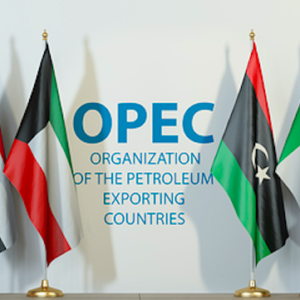A decade ago, the machinations of the Organization of the Petroleum Exporting Countries were front-page news. Accounting for 43 percent of global oil production in an environment of tight capacity, OPEC could easily influence the prices of crude oil and gasoline by increasing or decreasing output.
For example, in January 2008 the average U.S. retail price of gasoline was $3.10 per gallon. Responding to slack demand because of the financial crisis, OPEC ramped up production significantly so that a year later gasoline in the United States was only $1.84 per gallon.
In contrast to the price volatility that was common in the past, today’s energy markets are much more stable. Indeed the average price of gasoline today, around $2.90 per gallon, is roughly the same as a year ago. What is more, the energy markets no longer react strongly to external shocks, such as the recent sabotage of oil tankers in the Persian Gulf, as they did in the past.
Without question, the calming of global energy markets can be attributed to the “shale revolution” in the United States that has boosted output from 5.3 million to 12.3 million barrels per day in 10 years and made us the world’s No. 1 crude oil producer. A decade ago, we were importing nearly 4 million barrels per day, but this year we are exporting more than 3 million. As a result, OPEC’s share of global output has fallen to 31 percent.
This is not to suggest that OPEC has become irrelevant. But its mission has changed to one of primarily reacting to activity in the U.S. oil patch. For instance, in late 2016 OPEC joined with Russia and several other non-OPEC producers to reduce production by 1.8 million barrels per day in response to growing output from the Permian Basin. Then in December 2018, OPEC agreed to reduce production by an additional 800,000 barrels per day through the first half of this year. These moves have helped bring global supply and demand into balance while stabilizing oil and gasoline prices.
In a curious way, the United States and OPEC and have become partners with both sides understanding the benefits of stability in the oil market. This co-dependency is now spreading to the natural gas market with Saudi Arabia, the world’s top crude exporter, recently sealing a 20-year agreement to buy liquefied natural gas from San Diego-based Sempra Energy. Saudi Aramco has also agreed to invest in Sempra’s multi-billion-dollar LNG export terminal in Port Arthur, Texas.
The implicit cooperation between the United States and OPEC bodes well for long-term domestic and global energy security. According to the U.S. Energy Information Administration, despite the rapid growth of renewables like wind and solar, 20 years from now the world will still depend on oil and natural gas to meet half its energy needs.
Energy security also fosters economic development and poverty reduction. Today, 600 million people on the planet live in extreme poverty while 80 percent of the earth’s population of 7.7 billion earn less than $10 per day. Because economic development and energy consumption go hand in hand, access to affordable energy will be one of the keys to reducing global poverty.
By sustaining long-term production growth and reasonable prices for oil and natural gas, America and OPEC are unwittingly helping to expand the global economy and improve the human condition.

